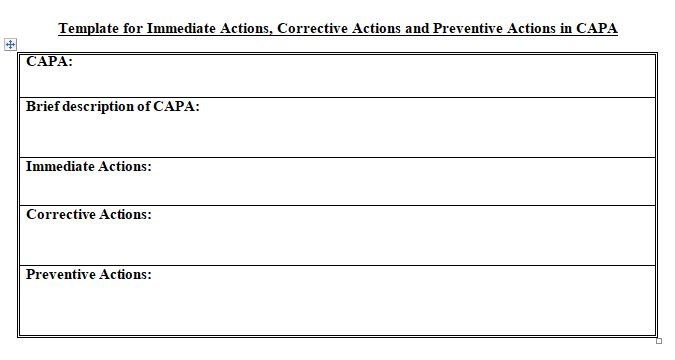CAPA investigations and rectification involve a systematic approach to investigate the root cause of a problem and then identify and implement corrective and preventive actions to prevent similar issues from occurring in the future. This article will provide an overview of the CAPA investigations and rectification process, as well as some tips for making the process more successful.
The final target of any corrective and preventative action is, quite simply, a solution to the issue from which the CAPA was created. In any event if CAPA is not driving toward a solution, a CAPA is a waste of time and resources.
In CAPA problem solving situation, there are four approaches to the examination component of a CAPA:
Trial and Error: This strategy may work for some organizations however it also has the potential to intensify the issue.
Fish-boning (design of experiments and brainstorming): These quality tools are generally preferred solutions over earlier trial and error approach, but they are also reliant on past experience and conceivably pointless if the root cause lies outside the domain expertise of personnel. Scrap and waste of time and resources are potential problems.
Relative Approach: A deductive reasoning approach is the ideal strategy in that it provides understanding of what the problem is not. Investigators can use a comparative approach to discover what sets the problem apart. A fact-based, objective comparative approach investigation should yield clues that identify the problem’s root cause which will then require a corrective action.
PICCC-5 step Approach
One valuable investigative tactic is sometimes referred to as the PICCC, this acronym means Problem, Investigate, Clues, Compare, and Cause.
Problem: The initial phase in the PICCC methodology is to determine and understand precisely what has gone wrong.
Investigate: Once the problem has been identified, investigators can curate data that can be used in comparisons and determinations of what the problem is not.
Comparison: comparing time periods, locations, identifying types of defects, further refine and optimize the investigation.
Clues: The clues obtained during the investigation are inferences of the facts. At this stage of the investigation, the management is finally formulating some answers as to why the problem has occurred.
Cause: Reviewers can now take the clues and build a case study that can explain the problem or deviation. A conclusive assessment can be made regarding the identification, implementation and impact of the event.
Execution of CAPA: Possible approaches and Actions
Once CAPA point of interest have been characterized and impact and magnitude scores have been determined, it is time to take action. Potential activities include:
Adaptive Action: Actions that allow the management to adapt to the problem and continue to execute according to management objectives.
Immediate Action: “Band-aid” or immediate actions that remove the effects of the issue and give ample time before a corrective action is implemented.
Corrective Actions: Prevention and containment actions that permanently removes the problem.
Preventive Actions: possible actions that evaluate potential future issues and eliminate the most likely causes of the issue so they are less likely to reoccur again.
Now that you know this:- hopefully you are in position to answer the Assignment(s)
- As an employee, please identify the CAPA’s wherein your were involved? Give a fresh look to those CAPA’s by implementing PICCC Approach?
- As an employee, please identify the CAPA’s wherein your were involved? Further can you note down what are the Immediate Actions, Corrective Actions and Preventive Actions taken?
- Please note down the difference between Immediate Actions, Corrective Actions and Preventive Actions in CAPA closure?

In conclusion, implementing a systematic approach to CAPA investigations and rectification is crucial for any organization committed to continuous improvement and quality assurance. By following the steps outlined in this article, such as conducting a thorough investigation, involving multidisciplinary teams, and monitoring the effectiveness of implemented actions, companies can mitigate the risks associated with recurring issues and prevent future problems.